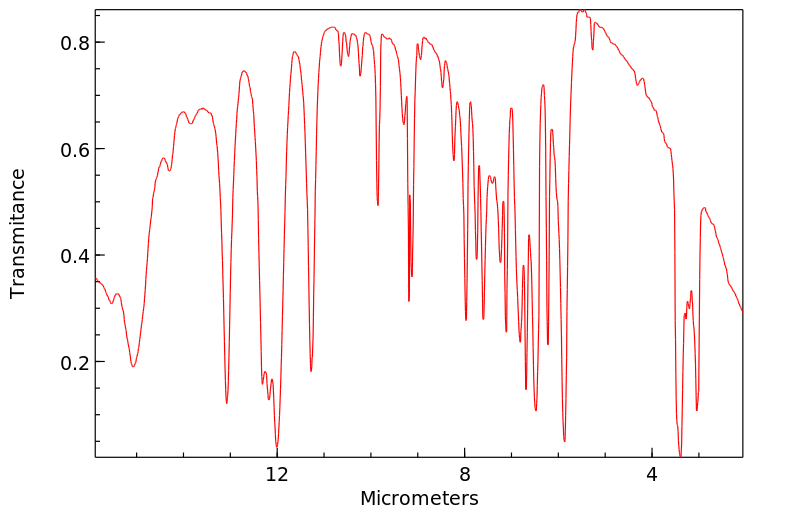N-(4-chlorophenyl)-2,2,2,-trichloroacetamide | 2877-13-6
中文名称
——
中文别名
——
英文名称
N-(4-chlorophenyl)-2,2,2,-trichloroacetamide
英文别名
N-4-chlorophenyltrichloroacetamide;trichloro-acetic acid-(4-chloro-anilide);Trichlor-essigsaeure-(4-chlor-anilid);2,2,2-trichloro-N-(4-chlorophenyl)-acetamide;2,2,2,4'-tetrachloro-acetanilide;α,α,α-Trichlor-p-chloracetanilid;Acetamide, 2,2,2-trichloro-N-(4-chlorophenyl)-;2,2,2-trichloro-N-(4-chlorophenyl)acetamide
CAS
2877-13-6
化学式
C8H5Cl4NO
mdl
MFCD00028819
分子量
272.946
InChiKey
CWUXLDOMGYBJFB-UHFFFAOYSA-N
BEILSTEIN
——
EINECS
——
-
物化性质
-
计算性质
-
ADMET
-
安全信息
-
SDS
-
制备方法与用途
-
上下游信息
-
文献信息
-
表征谱图
-
同类化合物
-
相关功能分类
-
相关结构分类
计算性质
-
辛醇/水分配系数(LogP):4
-
重原子数:14
-
可旋转键数:1
-
环数:1.0
-
sp3杂化的碳原子比例:0.125
-
拓扑面积:29.1
-
氢给体数:1
-
氢受体数:1
安全信息
-
海关编码:2924299090
SDS
上下游信息
-
下游产品
中文名称 英文名称 CAS号 化学式 分子量 —— methyl 2-((4-chlorophenyl)amino)-2-oxoacetate 41374-66-7 C9H8ClNO3 213.62
反应信息
-
作为反应物:描述:N-(4-chlorophenyl)-2,2,2,-trichloroacetamide 在 2,4-双(对甲苯基硫代)-1,3-二硫杂-2,4-二磷杂环丁烷-2,4-二硫化物 作用下, 以 甲苯 为溶剂, 生成 N-4-chlorophenyltrichlorothioacetamide参考文献:名称:Preparation of trichlorothioacetamides and their unexpected rearrangement to thiooxamides摘要:The preparation of several N-monosubstituted trichlorothioacetamides by thionation of the corresponding acetamides, with the use of Heimgartner's reagent is described. In contrast to the corresponding amides which umdergo base-induced beta-elimination of chloroform, the title compounds undergo an unexpected rearrangement to thiooxamides. The reaction mechanism is discussed. (C) 1998 Elsevier Science Ltd. All rights reserved.DOI:10.1016/s0040-4039(98)02080-2
-
作为产物:描述:参考文献:名称:Sukornick, Organic Syntheses, 1960, vol. 40, p. 103摘要:DOI:
文献信息
-
A novel synthesis of isocyanates and ureas via β-elimination of haloform作者:S. Braverman、M. Cherkinsky、L. Kedrova、A. ReiselmanDOI:10.1016/s0040-4039(99)00372-x日期:1999.4isocyanates via base-induced β-elimination of haloform N-monosubstituted trihaloacetamides is described. The rate of reaction exhibits a strong dependence on the nature of the trihalomethyl group. Thus, while the reaction of tribromoacetamides proceeds at room temperature and the reaction of trichloroacetamides requires heating in polar solvents, no reaction could be observed for any of the corresponding
-
Photoinduced Alcoholysis of Trihaloacetyl Group作者:Yasuji Izawa、Katsuhiro Ishiguro、Hideo TomiokaDOI:10.1246/bcsj.56.951日期:1983.3Photolysis of trichloroacetamide in nondegassed methanol gave methyl oxanilate (13–44%), along with carbamate (3–20%) and amine (4–12%). Similar irradiation of other trichloroacetyl derivatives of aliphatic ketone, aldehyde, and acetate afforded only radical product. The results are interpreted in terms of the mechanism involving electron transfer of the radical pair.
-
Die Darstellung von N-Trichloracetaniliden unter der Anwendung von Phosphoroxychlorid作者:Francisco Antonio Berti、Lizwaldo Mario ZitiDOI:10.1002/ardp.19522850806日期:——
-
Microwave Promoted Environmentally Benign Synthesis of 2-Aminobenzothiazoles and Their Urea Derivatives作者:Zheng Li、Shuxiu Xiao、Guoqiang Tian、Anguo Zhu、Xu Feng、Jing LiuDOI:10.1080/10426500701578506日期:2008.4.182-Aminobenzothiazoles were efficiently synthesized using stable, crystalline tetrabutylammonium tribromide instead of toxic, corrosive liquid bromine under solvent-free and microwave irradiation condition. Furthermore, benzothiazol-2-ylureas were synthesized in good to high yield by reactions of 2-aminobenzothiazoles with N-trichloroacetanilides, which were used as a substitute for toxic, unstable isocyanates, under microwave irradiation condition. This protocol has advantages of no utilization of hazardous chemicals, rapid reaction rate, high yield, and easy work-up procedure.
-
Bew, Clive; Joshi, Virginia Otero de; Gray, Jim, Journal of the Chemical Society. Perkin transactions I, 1982, p. 945 - 948作者:Bew, Clive、Joshi, Virginia Otero de、Gray, Jim、Kaye, Perry T.、Meakins, G. DenisDOI:——日期:——
表征谱图
-
氢谱1HNMR
-
质谱MS
-
碳谱13CNMR
-
红外IR
-
拉曼Raman
-
峰位数据
-
峰位匹配
-
表征信息
同类化合物
(βS)-β-氨基-4-(4-羟基苯氧基)-3,5-二碘苯甲丙醇
(S,S)-邻甲苯基-DIPAMP
(S)-(-)-7'-〔4(S)-(苄基)恶唑-2-基]-7-二(3,5-二-叔丁基苯基)膦基-2,2',3,3'-四氢-1,1-螺二氢茚
(S)-盐酸沙丁胺醇
(S)-3-(叔丁基)-4-(2,6-二甲氧基苯基)-2,3-二氢苯并[d][1,3]氧磷杂环戊二烯
(S)-2,2'-双[双(3,5-三氟甲基苯基)膦基]-4,4',6,6'-四甲氧基联苯
(S)-1-[3,5-双(三氟甲基)苯基]-3-[1-(二甲基氨基)-3-甲基丁烷-2-基]硫脲
(R)富马酸托特罗定
(R)-(-)-盐酸尼古地平
(R)-(-)-4,12-双(二苯基膦基)[2.2]对环芳烷(1,5环辛二烯)铑(I)四氟硼酸盐
(R)-(+)-7-双(3,5-二叔丁基苯基)膦基7''-[((6-甲基吡啶-2-基甲基)氨基]-2,2'',3,3''-四氢-1,1''-螺双茚满
(R)-(+)-7-双(3,5-二叔丁基苯基)膦基7''-[(4-叔丁基吡啶-2-基甲基)氨基]-2,2'',3,3''-四氢-1,1''-螺双茚满
(R)-(+)-7-双(3,5-二叔丁基苯基)膦基7''-[(3-甲基吡啶-2-基甲基)氨基]-2,2'',3,3''-四氢-1,1''-螺双茚满
(R)-(+)-4,7-双(3,5-二-叔丁基苯基)膦基-7“-[(吡啶-2-基甲基)氨基]-2,2”,3,3'-四氢1,1'-螺二茚满
(R)-3-(叔丁基)-4-(2,6-二苯氧基苯基)-2,3-二氢苯并[d][1,3]氧杂磷杂环戊烯
(R)-2-[((二苯基膦基)甲基]吡咯烷
(R)-1-[3,5-双(三氟甲基)苯基]-3-[1-(二甲基氨基)-3-甲基丁烷-2-基]硫脲
(N-(4-甲氧基苯基)-N-甲基-3-(1-哌啶基)丙-2-烯酰胺)
(5-溴-2-羟基苯基)-4-氯苯甲酮
(5-溴-2-氯苯基)(4-羟基苯基)甲酮
(5-氧代-3-苯基-2,5-二氢-1,2,3,4-oxatriazol-3-鎓)
(4S,5R)-4-甲基-5-苯基-1,2,3-氧代噻唑烷-2,2-二氧化物-3-羧酸叔丁酯
(4S,4''S)-2,2''-亚环戊基双[4,5-二氢-4-(苯甲基)恶唑]
(4-溴苯基)-[2-氟-4-[6-[甲基(丙-2-烯基)氨基]己氧基]苯基]甲酮
(4-丁氧基苯甲基)三苯基溴化磷
(3aR,8aR)-(-)-4,4,8,8-四(3,5-二甲基苯基)四氢-2,2-二甲基-6-苯基-1,3-二氧戊环[4,5-e]二恶唑磷
(3aR,6aS)-5-氧代六氢环戊基[c]吡咯-2(1H)-羧酸酯
(2Z)-3-[[(4-氯苯基)氨基]-2-氰基丙烯酸乙酯
(2S,3S,5S)-5-(叔丁氧基甲酰氨基)-2-(N-5-噻唑基-甲氧羰基)氨基-1,6-二苯基-3-羟基己烷
(2S,2''S,3S,3''S)-3,3''-二叔丁基-4,4''-双(2,6-二甲氧基苯基)-2,2'',3,3''-四氢-2,2''-联苯并[d][1,3]氧杂磷杂戊环
(2S)-(-)-2-{[[[[3,5-双(氟代甲基)苯基]氨基]硫代甲基]氨基}-N-(二苯基甲基)-N,3,3-三甲基丁酰胺
(2S)-2-[[[[[((1S,2S)-2-氨基环己基]氨基]硫代甲基]氨基]-N-(二苯甲基)-N,3,3-三甲基丁酰胺
(2S)-2-[[[[[[((1R,2R)-2-氨基环己基]氨基]硫代甲基]氨基]-N-(二苯甲基)-N,3,3-三甲基丁酰胺
(2-硝基苯基)磷酸三酰胺
(2,6-二氯苯基)乙酰氯
(2,3-二甲氧基-5-甲基苯基)硼酸
(1S,2S,3S,5S)-5-叠氮基-3-(苯基甲氧基)-2-[(苯基甲氧基)甲基]环戊醇
(1S,2S,3R,5R)-2-(苄氧基)甲基-6-氧杂双环[3.1.0]己-3-醇
(1-(4-氟苯基)环丙基)甲胺盐酸盐
(1-(3-溴苯基)环丁基)甲胺盐酸盐
(1-(2-氯苯基)环丁基)甲胺盐酸盐
(1-(2-氟苯基)环丙基)甲胺盐酸盐
(1-(2,6-二氟苯基)环丙基)甲胺盐酸盐
(-)-去甲基西布曲明
龙蒿油
龙胆酸钠
龙胆酸叔丁酯
龙胆酸
龙胆紫-d6
龙胆紫







